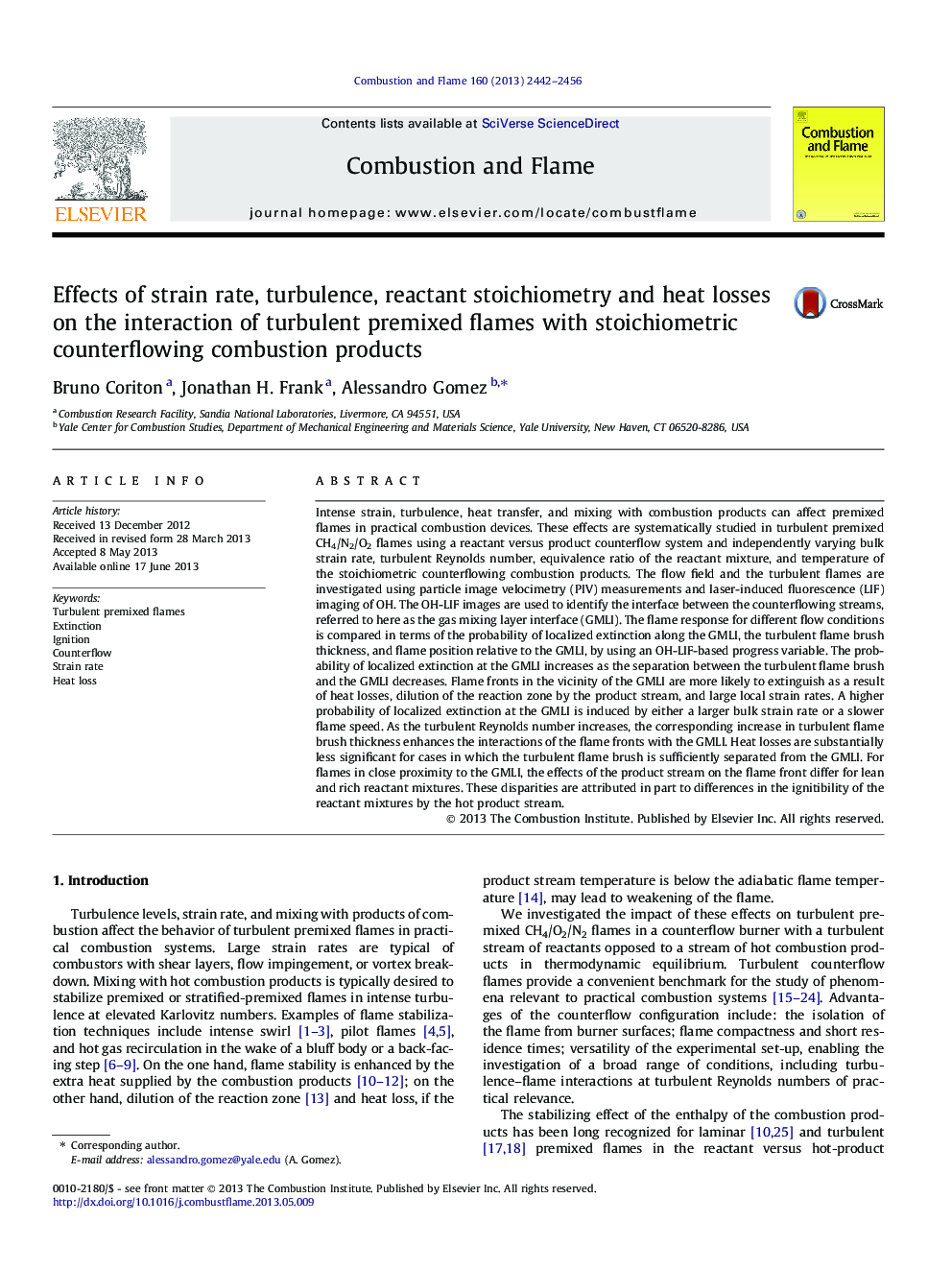| کد مقاله | کد نشریه | سال انتشار | مقاله انگلیسی | نسخه تمام متن |
|---|---|---|---|---|
| 166864 | 457824 | 2013 | 15 صفحه PDF | دانلود رایگان |

Intense strain, turbulence, heat transfer, and mixing with combustion products can affect premixed flames in practical combustion devices. These effects are systematically studied in turbulent premixed CH4/N2/O2 flames using a reactant versus product counterflow system and independently varying bulk strain rate, turbulent Reynolds number, equivalence ratio of the reactant mixture, and temperature of the stoichiometric counterflowing combustion products. The flow field and the turbulent flames are investigated using particle image velocimetry (PIV) measurements and laser-induced fluorescence (LIF) imaging of OH. The OH-LIF images are used to identify the interface between the counterflowing streams, referred to here as the gas mixing layer interface (GMLI). The flame response for different flow conditions is compared in terms of the probability of localized extinction along the GMLI, the turbulent flame brush thickness, and flame position relative to the GMLI, by using an OH-LIF-based progress variable. The probability of localized extinction at the GMLI increases as the separation between the turbulent flame brush and the GMLI decreases. Flame fronts in the vicinity of the GMLI are more likely to extinguish as a result of heat losses, dilution of the reaction zone by the product stream, and large local strain rates. A higher probability of localized extinction at the GMLI is induced by either a larger bulk strain rate or a slower flame speed. As the turbulent Reynolds number increases, the corresponding increase in turbulent flame brush thickness enhances the interactions of the flame fronts with the GMLI. Heat losses are substantially less significant for cases in which the turbulent flame brush is sufficiently separated from the GMLI. For flames in close proximity to the GMLI, the effects of the product stream on the flame front differ for lean and rich reactant mixtures. These disparities are attributed in part to differences in the ignitibility of the reactant mixtures by the hot product stream.
Journal: Combustion and Flame - Volume 160, Issue 11, November 2013, Pages 2442–2456